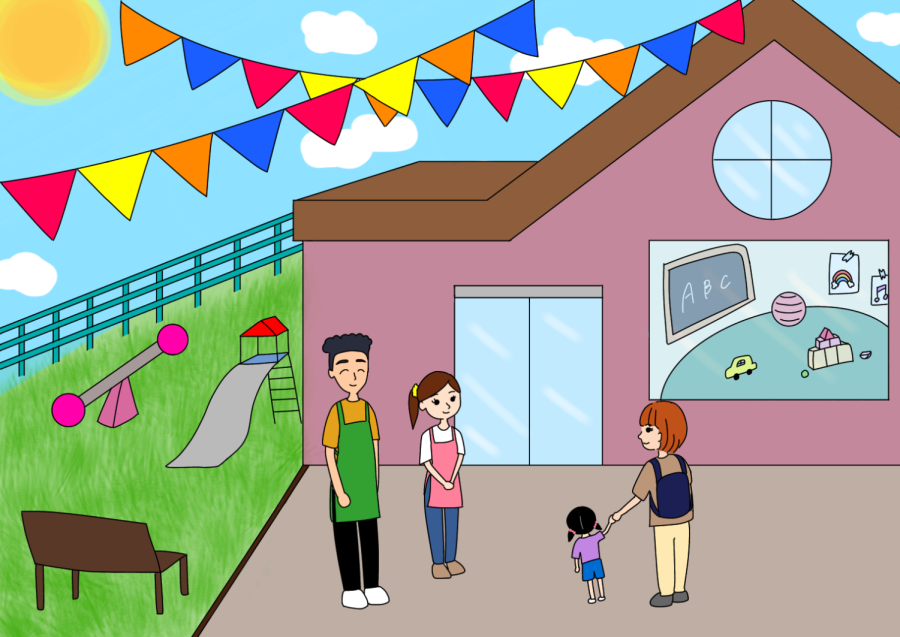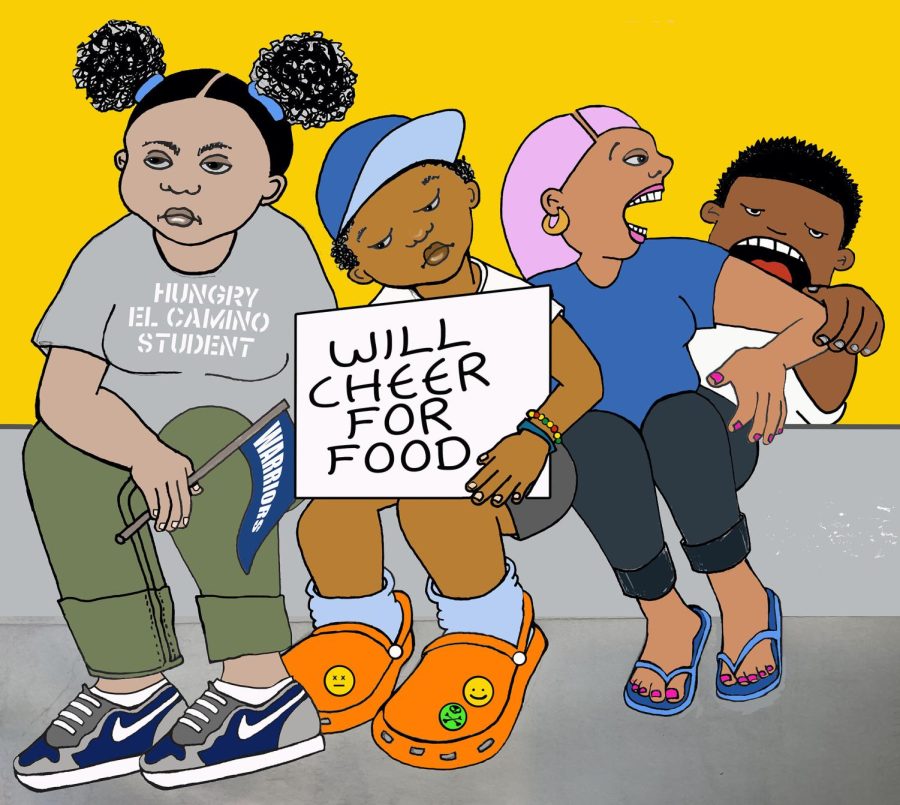Fully armored police personnel carrying 9 mm submachine guns order a group of brawling, knife wielding youths to their knees. A booming, authoritative voice commands over a loudspeaker, “Rebellious subjects, enemies to peace, profaners of this neighbour-stained steel, will they not hear?”
Sampson, Gregory, Benvolio, Tybalt and their comrades kneel on the ground with their hands behind their heads. Montague and Capulet stand to either side, a disgusted glower twisting the face of each. The Prince, in olive drab military officer livery, comes forth to decree a call to court for the feuding house heads. On pain of death, indeed.
EC’s version of “Romeo and Juliet” by William Shakespeare, is playing at the Campus Theatre Friday and Saturday at 8 p.m. and Sunday at 3 p.m. Tickets are $12.
Shakespeare’s classic tragedy is performed in the powerful setting of the “Troubles,” a period in Northern Ireland of intense violence and discord between nationalist Catholics and unionist Protestants. The uniformed militia personnel are members of the Royal Ulster Constabulary (RUC) which was deeply embroiled in the 30 years of deadly conflict.
The story occurs during the early 1980s, when the first serious discussions of peace were occurring and a unified Ireland finally seemed within reach.
“I chose that conflict because I wanted it to be contemporary and familiar, but not so familiar it’s mundane,” Director John DeMita said.
The script is the traditional Shakespearian text, spoken in American accents (Irish-accented Shakespeare probably runs the risk of causing convulsions). The theme is subtle, acting as an undercurrent to the play itself rather than putting a twist on the classic plot. A basic knowledge of the time and place in which the play is set is vital to understand the statement the adaptation makes. Because there is minimal departure from the original lines and no changes to the original story, the theme relies almost entirely on its very sophisticated technical aspects, made possible by a 15-person technical crew.
In addition to a very involved visual production, was over 100 hours of sound production.
“There are 200 cues for the lights, between 90 and 110 for sound, and 21 shift cues for the set,” stage tech John Reyes, theater major, said.
“Everything was composed specifically for the show. It was all recorded in my studio with a guitar player. All the bass, cello, everything was recorded separately,” technical director Bill Georges said.
Georges is mainly referring to the version of U2’s “Sunday Bloody Sunday,” which was dissected and re-recorded for use in the play and sounds almost identical to the original.
Modern, high-quality props and costuming are make this play’s most powerful statements. Romeo wears converse shoes, turtlenecks and a corduroy jacket for much of the play. Juliet wears conservative blouses and modest knee-length pleated skirts. Her wall is plastered with U2 posters. The military police wear olive drab battle dress uniform, bulletproof vests, combat boots and riot helmets. Officers wear uniforms and carry pistols at their hips. Paris himself carries a matte black 9 mm pistol. When Romeo and Benvolio learn of the masquerade party from the Capulets’ servant, they appear to be smoking something. They’re passing a crudely-rolled cigarette back and forth. Can that really be what it looks like? Yes, that’s definitely a joint they’re smoking.
The changes to the story that carry the theme’s message are simple but powerful. The set is simple at first glance with the Capulets’ two-story home to the left, and the simple wood and plaster dwelling of Father (Friar) John to the right. Both of these buildings, however, rotate to reveal entire indoor sets, the comfortably appointed interior of the Capulets’ with Juliet’s room upstairs. In the center is a denominationally ambiguous stone church with arched wooden doors.
The production is a physical masterpiece but definitely requires some research or prior knowledge of Irish history to understand its statement on peace. Those who come to the play expecting a focus on vicious Protestant-Catholic conflict presented in lilting Irish accents may come away unsatisfied because of the many specific references embedded in the details.
“I do like the fact that they’re using the traditional script but they should keep more closely with the theme,” Jon Medina, biology major at Citrus college, said.







